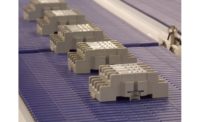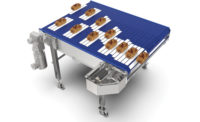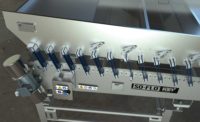Belt and conveyor users prioritize sanitation, automation
Snack and bakery producers must keep things moving cleanly and efficiently.

Courtesy of Key Technology
Companies that make belts and conveyors say their customers want machinery that’s easy to clean, quick to clean, and provides advanced automation. The idea is to empower companies to operate with fewer humans on site (given that fewer seem to be available these days).
Cleaning up
Customers of Dorner Conveyors seem most focused on easier cleaning, lower maintenance, and greater up-time, says John Kuhnz, vice president of sales. “The legs tend to be a harborage point,” he says. “You want to make sure your leg is going to be clean. The other part about it is around the drive area. The spinning shaft attracts debris and what-not. It’s somewhat hidden because you want to get the motor into the frame.”
His clients expect components that are easy to remove quickly, wipe down, and put back into place, Kuhnz says. “A lot of the market has developed significantly, and expectations are high,” he says. “The smaller to midsized companies might need a little bit more direction as to why these things are important, and a selling process of educating them. But a larger company that’s been through enough cycles, they’re driving toward sanitary, hygienic features.” Lower maintenance and greater up-time are related to that, Kuhnz adds, while worker safety also remains a concern.
Cleanability, changeover time, and automation top the list of concerns for customers of Volkmann, says Dave Nichols, vice president of sales and marketing. “Everyone is down on resources right now, as far as people go,” he says. “Anything that can make their downtime or their process faster; that’s where changeover time comes into play, and they really want to take operators outside of the system. They don’t have enough people.”
Saving labor
Not long ago, a person would take bags of flour up a ladder, dump it into the mix, and climb back down; now, “Instead of hand-loading a hopper at the beginning of the system, an operator can walk away and do something else,” Nichols says. “If we can save the operator from doing it manually, that’s what we run into a lot.”
Cory Williams, key account manager at PFI Conveyors, says ease and speed of sanitation and automation are frequent customer requests for his business, as well. “Anything that can become toolless, removed quickly, cleaned and dried quickly, has become critical in multiple industries,” he says. “Some switch has been flipped in the last three to five months where every project has a quick release on the take-up side. It’s become somewhat of a standard.”
And customers have higher automation standards, with more vision systems getting installed, Williams says, adding that pizza manufacturers, for example, are trying to get from two to four people operating a line to, ideally, zero. “We’re able to address a lot of those applications with our control engineers and their capabilities, and how we leverage and work with our partners,” Williams says. “They’re repurposing headcount.” That’s meant that automation ROI, once expected to be one to two years, can be as long as five and still make sense. “It’s directly tied into the labor shortage,” he adds.
Safety concerns
Customers of AMMEGA, which produces the Ammeraal Beltech brand, ask the most about longevity, food safety, speed, and waste reduction, says Bobby Bauman, director of product management, synthetic and specialty. “Everybody wants their belts to last longer,” he says. “In the U.S., the industry is turning more and more toward food safety. Most contamination on the belt happens with the edges wearing and getting something on the conveyor.”

Courtesy of AMMEGA
Facilities are trying to run more quickly, Bauman adds. “Being able to run faster and go over small pulleys is something that in the food industry is a real challenge,” he says. “You have to be able to transfer product from one conveyor to another at a high rate of speed. The other thing is the release of product and reducing waste. Whether it’s chocolate, or dough, or whatever, being able to release that and having less waste coming off the product and falling onto the floor, is a big thing.”
Air flow and cooling the risk of fire is another request from AMMEGA’s customers, says David Buchanan, U.S. spiral manager. “They don’t want to run it on a plastic belt because of the fire risk; they want nylon material that’s self-extinguishing after a period of time,” he says. “This is a demand from the bakery industry globally. Air flow is a big thing, particularly for cooling bread products. The more open the belt is, the more air, the quicker it cools the product. And breads can sweat as they cool. The more contact they have, they can become molded quickly.”
Clean and simple
Rudy Sanchez, food handling product manager for Key Technology, says improved sanitation design and easier maintenance are high on his customers’ desire. “Customers want conveyor belts that can be cleaned more easily,” he says. “They want 100% welding to help with sanitation; no open welds or lamination. They have been asking for open design, which means that customers don’t want us to use … a closed tube where bacteria can eventually get inside. The legs should be open. The frame structure of the conveyor should be open.”
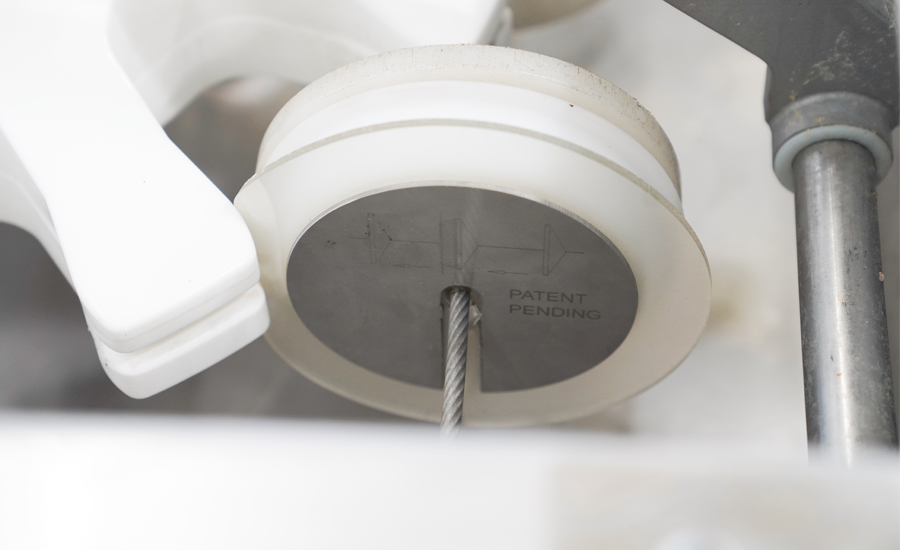

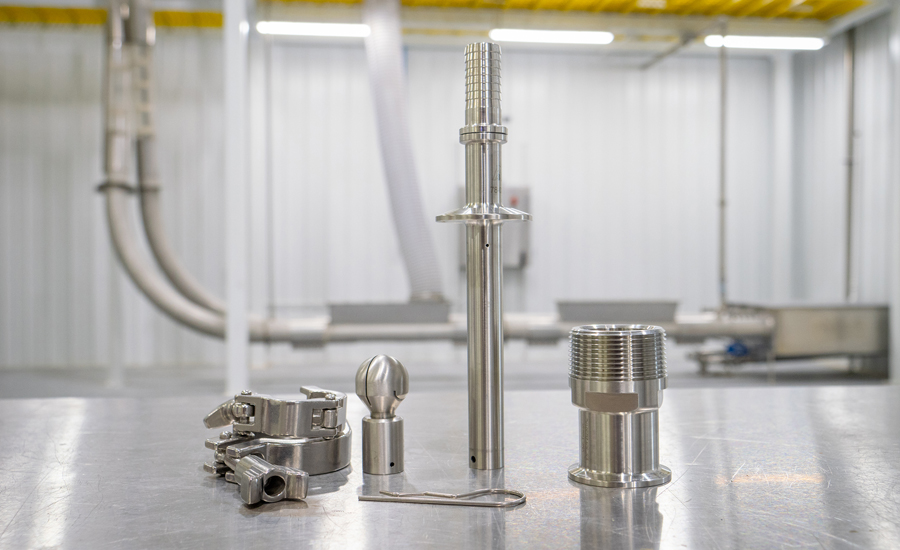
Courtesy of Cablevey Conveyors
At Cablevey Conveyors, automation and sanitation are also top of mind for customers. “At least in the U.S., the labor shortage and getting qualified labor is an issue,” says John Adair, director, engineering. “Anywhere we can introduce automation to reduce bodies and reduce time is very much wanted. Sanitation is the other one. That is huge. Being an enclosed system, has always bene a sanitary solution. But we want to get even more to that point, to drive that this is food-grade, top-tier.”
Looking for a reprint of this article?
From high-res PDFs to custom plaques, order your copy today!




